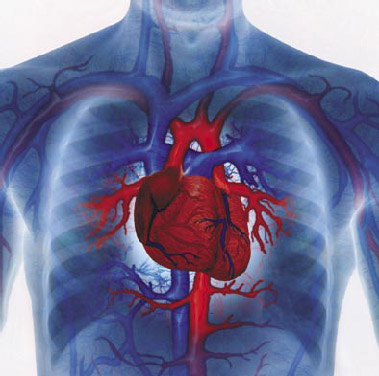The Healthy Heart and How It Functions

How the Heart is Structured
The structure of the heart can be divided into four areas, or chambers.
- Right atrium
- Right ventricle
- Left atrium
- Left ventricle
The upper chambers of the heart, called atria, receive blood from the rest of the body, including the lungs. The bottom chambers of the heart, called the ventricles, pump blood to the lungs and the rest of the body.
The heart is also divided into right and left sides. The right side of the heart receives blood from the rest of the body and pumps it to the lungs so that the blood can receive more oxygen. The left side of the heart receives blood from the lungs and pumps it to the rest of the body.
How Blood Flows Through the Heart
Right Atrium – The body sends blood that is low in oxygen to the right atrium. The superior vena cava is a large vein that carries blood from the upper body to the heart, and the inferior vena cava carries blood from the lower part of the body.
Right Ventricle – Blood then flows from the right atrium to the right ventricle. The right ventricle then contracts, and pumps blood into the pulmonary arteries to the lungs. The lungs then oxygenate the blood.
Left Atrium – From the lungs, the oxygen-rich blood goes to the left atrium. Then the blood flows down to the left ventricle.
Left Ventricle – The left ventricle then pumps blood into the aorta artery, which carries the oxygen-rich blood to the rest of the body. The left ventricle must produce enough force to pump blood from head to toe, thus the left ventricle is often much thicker and stronger than any of the other chambers.
Remember the heart is on the left side of the chest. So the right side of the heart is roughly behind the sternum (chest bone).
The Valves of the Heart
In order for blood to flow properly through the heart, the heart has four valves that open and close. The tricuspid valve is between the right atrium and ventricle. The mitral valve is between the left atrium and left ventricle. The pulmonic valve is between the right ventricle and pulmonary artery. The aortic valve is between the left ventricle and the aorta (the artery that carries oxygen-rich blood to the whole body).
How and When the Body Makes the Heart Pump
There are two primary systems that influence the heart’s pumping mechanism. The first is the mechanical system, or the actual muscle pushing the blood from one chamber to another. The second is the electrical system which tells the mechanical system when and how to pump.
Mechanical – The heart pumps in two phases: systole and diastole. Systole is the phase where the muscle is actively contracting. Diastole is the phase in which the muscle is relaxing. You may recognize Systole and Diastole as the two numbers in the blood pressure reading. The first number is the systolic blood pressure, or the highest pressure in the arteries. The second number is the diastolic blood pressure, or the lowest pressure in the arteries.
Prepared in partnership with Sujan Reddy, MD, Class of 2008, Case Western Reserve University School of Medicine, Resident in Medicine at Emory University School of Medicine.
For more information:
Go to the Heart Health health topic.